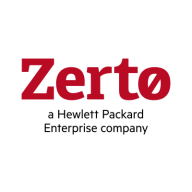


Zerto and Rivery compete in different categories; Zerto focuses on disaster recovery, while Rivery specializes in data integration. Zerto leads in customer satisfaction due to its continuous data protection features, whereas Rivery stands out in data management with its extensive integration capabilities.
Features: Zerto provides real-time replication, automation, and business continuity, focusing on data security. Rivery offers seamless cloud connections, ETL processes, and flexible data transformation.
Ease of Deployment and Customer Service: Zerto has an easy deployment process with comprehensive support for business continuity, guiding users in disaster recovery planning. Rivery aligns well with cloud infrastructures, though it requires a steeper learning curve while providing extensive resources for data management challenges.
Pricing and ROI: Zerto offers a cost-effective solution with promising ROI by minimizing downtime and data loss. Rivery requires a higher initial investment, justified by its extensive data operation features. The ROI is significant when its full data management potential is utilized.


IBM Turbonomic offers automation, planning, and right-sizing recommendations to streamline resource management, improve efficiencies, and optimize costs across virtualized environments and cloud platforms.
IBM Turbonomic is valued for its capability to optimize resource allocation and monitor virtual environments efficiently. It facilitates automated decision-making in VM sizing, load balancing, and cost optimization for both on-premises and cloud deployments. Users can leverage insights for workload placement, ensure peak performance assurance, and effectively right-size across VMware and Azure. The ongoing transition to HTML5 aims to improve visual and navigational ease, while expanded reporting features are anticipated. Opportunities for improved training, documentation, and integrations enhance platform usability and functionality.
What Are the Key Features?In finance, IBM Turbonomic aids in maintaining platform efficiency during market fluctuations. Healthcare organizations leverage its capability for resource optimization during high-demand periods to enhance patient care support. Retailers use it for planning in peak seasons, ensuring resources align with fluctuating demand to maintain performance continuity.
Rivery is a serverless, SaaS DataOps platform that empowers companies of all sizes around the world to consolidate, orchestrate, and manage internal and external data sources with ease and efficiency.
By offering comprehensive data solutions and partnering with complementary technology providers, including Google, Snowflake, Tableau, and Looker, Rivery enables data-driven companies to build the perfect ecosystems for all their data processes.
Zerto is used for disaster recovery, business continuity, data migration, and ransomware recovery, providing continuous data protection and near real-time replication. Valued for ease of use, efficient failover processes, and versatile integration, it enhances organizational efficiency, reduces errors, and boosts productivity.
We monitor all Cloud Migration reviews to prevent fraudulent reviews and keep review quality high. We do not post reviews by company employees or direct competitors. We validate each review for authenticity via cross-reference with LinkedIn, and personal follow-up with the reviewer when necessary.